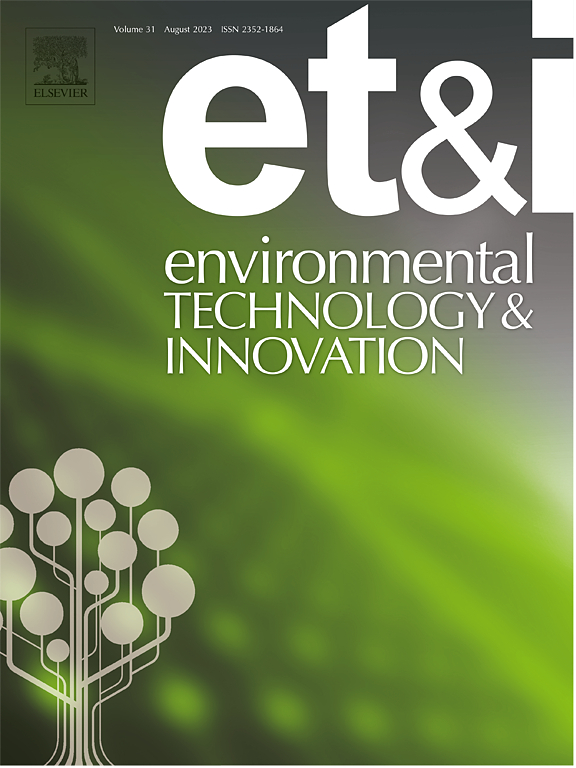城市化和地表温度分析的技术创新:德里遥感和机器学习案例研究
IF 6.7
2区 环境科学与生态学
Q1 BIOTECHNOLOGY & APPLIED MICROBIOLOGY
引用次数: 0
摘要
德里的快速城市化显著改变了其土地利用和土地覆盖(LULC),导致地表温度(LST)发生深刻变化,加剧了环境挑战。因此,本研究结合多时相Landsat影像、先进机器学习技术和景观破碎化指数,评估2001 - 2021年城市扩张对地表温度的影响。采用随机森林算法进行LULC分类,实现了较高的分类精度。通过计算斑块数(NP)、最大斑块指数(LPI)、平均斑块面积(MPA)、斑块密度(PD)、景观形状指数(LSI)和分形维数(FD)等景观指标来量化城市化趋势。采用单窗算法提取地表温度,采用Spearman相关和多元回归模型相结合的空间回归框架,建立城市化指标与气温变化的统计关系。结果表明,在过去的20年中,建成区面积增加了50% %,同时露天用地减少了81% %,耕地减少了15% %。地表温度呈现明显上升趋势,建成区平均气温从2001年的36.58 °C上升至2021年的41.81 °C,峰值温度达到51.60 °C,城市热岛效应加剧。回归分析显示,LPI与LST呈显著负相关(R²= 0.99),表明破碎化的城市结构对气温升高有贡献。相反,LSI和FD与LST呈正相关,证实了不规则和分散的城市增长模式加剧了热应力。这些发现强调了可持续城市规划的必要性,强调紧凑型城市发展、绿色基础设施和水体保护,以减轻热岛效应。本文章由计算机程序翻译,如有差异,请以英文原文为准。
Technological innovations in urbanization and land surface temperature analysis: A remote sensing and machine learning case study of Delhi
The rapid urbanization of Delhi has significantly transformed its Land Use and Land Cover (LULC), leading to profound alterations in Land Surface Temperature (LST) and exacerbating environmental challenges. Therefore, this study integrates multi-temporal Landsat imagery, advanced machine learning techniques, and landscape fragmentation indices to assess the impact of urban expansion on LST from 2001 to 2021. LULC classification was conducted using the Random Forest algorithm, achieving high classification accuracy. Landscape metrics such as Number of Patches (NP), Largest Patch Index (LPI), Mean Patch Area (MPA), Patch Density (PD), Landscape Shape Index (LSI), and Fractal Dimension (FD) were computed to quantify urbanization trends. The mono-window algorithm was used for LST retrieval, and a spatial regression framework incorporating Spearman’s correlation and multivariate regression models was applied to establish statistical relationships between urbanization metrics and temperature variations. Results indicate a 50 % increase in built-up area, accompanied by an 81 % reduction in open land and a 15 % decline in cropland over two decades. LST exhibited a substantial rise, with the mean temperature in built-up regions increasing from 36.58 °C in 2001 to 41.81 °C in 2021, and peak temperatures reaching 51.60 °C, highlighting the intensification of the urban heat island (UHI) effect. Regression analysis revealed a strong negative correlation between LPI and LST (R² = 0.99), indicating that fragmented urban structures contribute to higher temperatures. Conversely, LSI and FD showed positive correlations with LST, confirming that irregular and dispersed urban growth patterns exacerbate thermal stress. These findings underscore the need for sustainable urban planning, emphasizing compact city development, green infrastructure, and water body conservation to mitigate UHI effects.
求助全文
通过发布文献求助,成功后即可免费获取论文全文。
去求助
来源期刊

Environmental Technology & Innovation
Environmental Science-General Environmental Science
CiteScore
14.00
自引率
4.20%
发文量
435
审稿时长
74 days
期刊介绍:
Environmental Technology & Innovation adopts a challenge-oriented approach to solutions by integrating natural sciences to promote a sustainable future. The journal aims to foster the creation and development of innovative products, technologies, and ideas that enhance the environment, with impacts across soil, air, water, and food in rural and urban areas.
As a platform for disseminating scientific evidence for environmental protection and sustainable development, the journal emphasizes fundamental science, methodologies, tools, techniques, and policy considerations. It emphasizes the importance of science and technology in environmental benefits, including smarter, cleaner technologies for environmental protection, more efficient resource processing methods, and the evidence supporting their effectiveness.
 求助内容:
求助内容: 应助结果提醒方式:
应助结果提醒方式:


